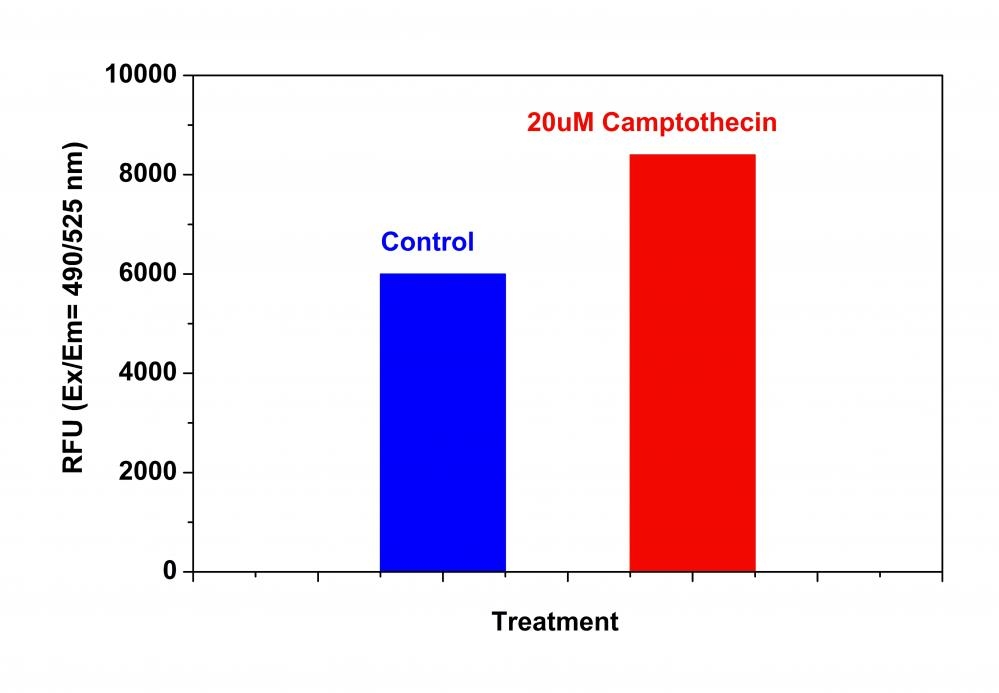Cell Meter™ Caspase 8 Activity Apoptosis Assay Kit
Green Fluorescence
Our Cell Meter™ assay kits are a set of tools for monitoring cellular functions. There are a variety of parameters that can be used to monitor cell apoptosis. This particular kit is designed to monitor cell apoptosis by measuring caspase 8 activity. Caspase 8 is a caspase protein, encoded by the CASP8 gene. Caspase 8 also plays an important role in neurodegenerative diseases such as Huntington disease. Caspase 8 is proven to have substrate selectivity for the peptide sequence Ile-Glu-Thr-Asp (IETD). This kit uses (Ac-IETD)2-R110 as a fluorogenic indicator for caspase 8 activity. Cleavage of rhodamine 110 (R110) peptides by caspase 8 generates strongly fluorescent R110 which is monitored at the emission between 520 nm and 530 nm with the excitation between 480 nm and 500 nm. This spectral feature makes the kit compatible with the FITC filter set. The kit provides all the essential components with an optimized assay protocol. The assay can be readily adapted for high throughput screenings. It can be used to either quantify the activated caspase 8 activities in apoptotic cells or screen the caspase 8 inhibitors.


| Catalog | Size | Price | Quantity |
|---|---|---|---|
| 22798 | 200 Tests | Price |
Spectral properties
| Extinction coefficient (cm -1 M -1) | 80000 |
| Excitation (nm) | 500 |
| Emission (nm) | 522 |
Storage, safety and handling
| H-phrase | H303, H313, H333 |
| Hazard symbol | XN |
| Intended use | Research Use Only (RUO) |
| R-phrase | R20, R21, R22 |
| UNSPSC | 12352200 |
Instrument settings
| Fluorescence microplate reader | |
| Excitation | 490 nm |
| Emission | 525 nm |
| Cutoff | 515 nm |
| Recommended plate | Black wall/clear bottom |
| Instrument specification(s) | Top/Bottom read mode |
Documents
Contact us
| Telephone | |
| Fax | |
| sales@aatbio.com | |
| International | See distributors |
| Bulk request | Inquire |
| Custom size | Inquire |
| Technical Support | Contact us |
| Request quotation | Request |
| Purchase order | Send to sales@aatbio.com |
| Shipping | Standard overnight for United States, inquire for international |
Page updated on December 17, 2025

